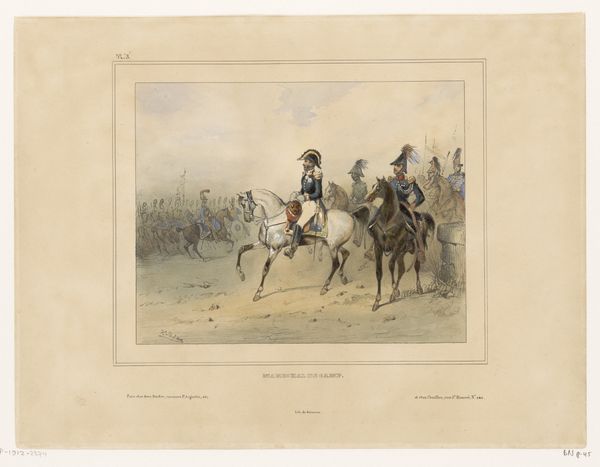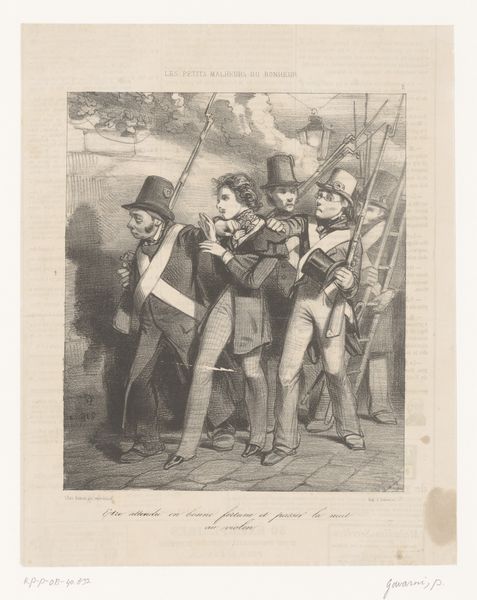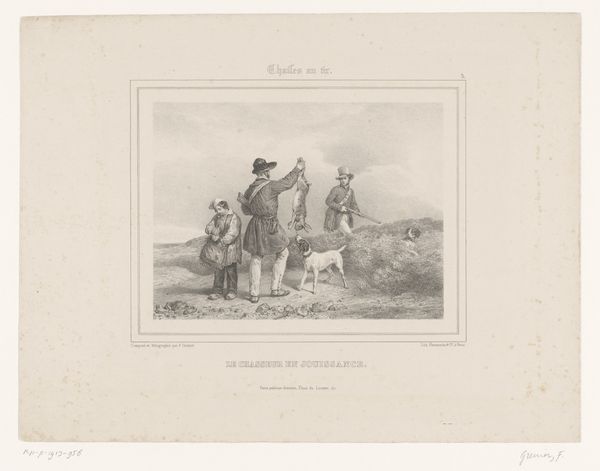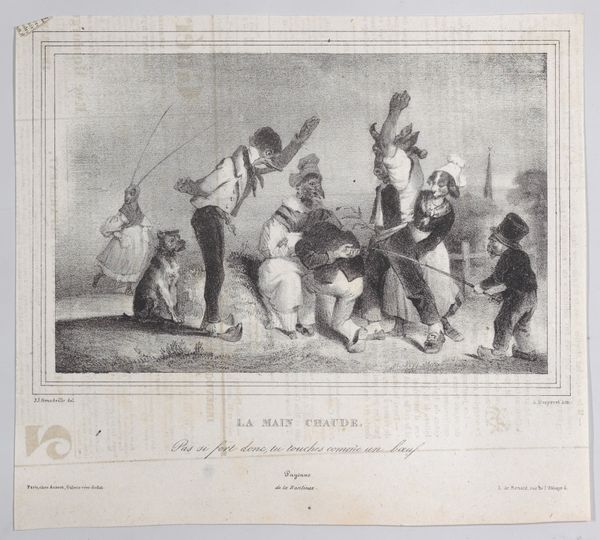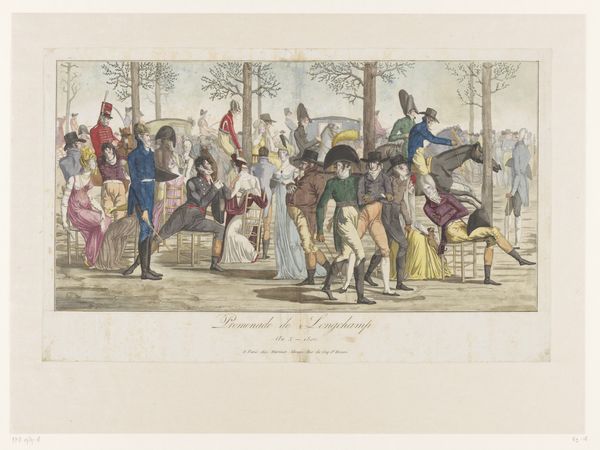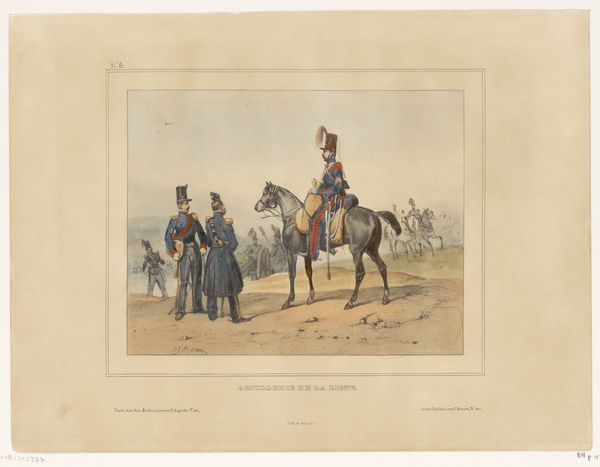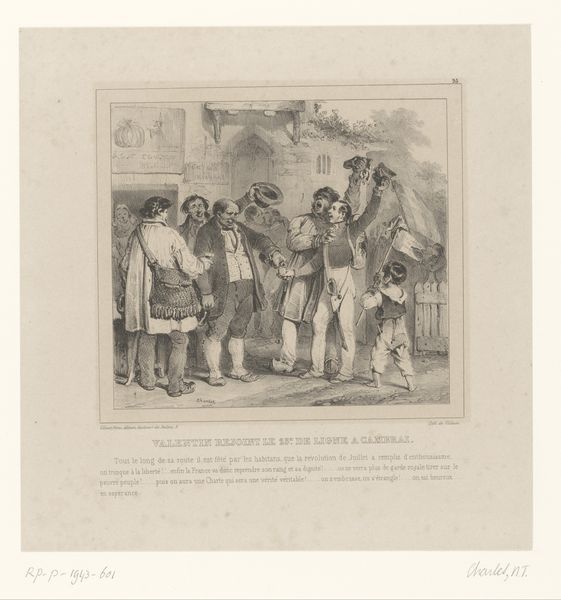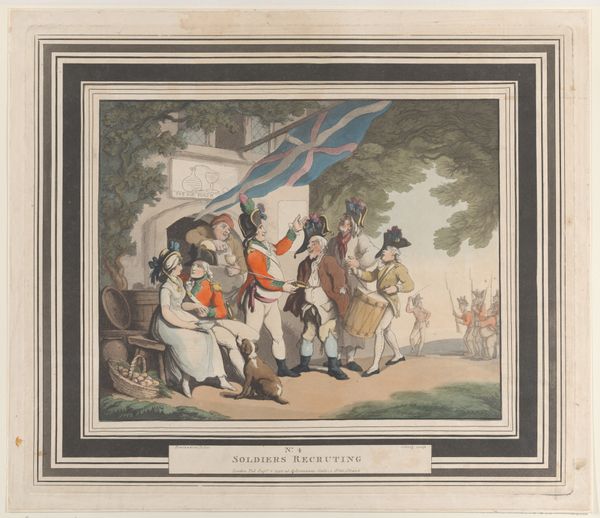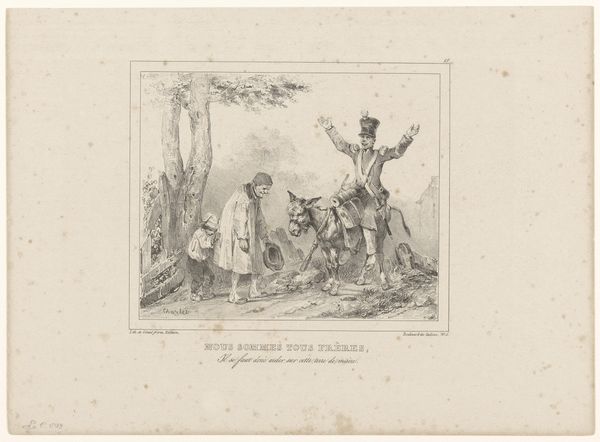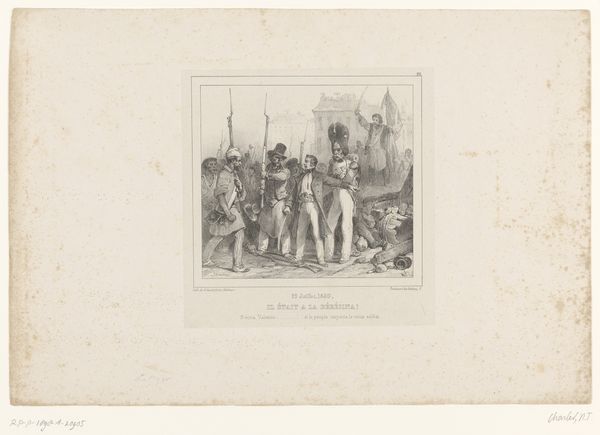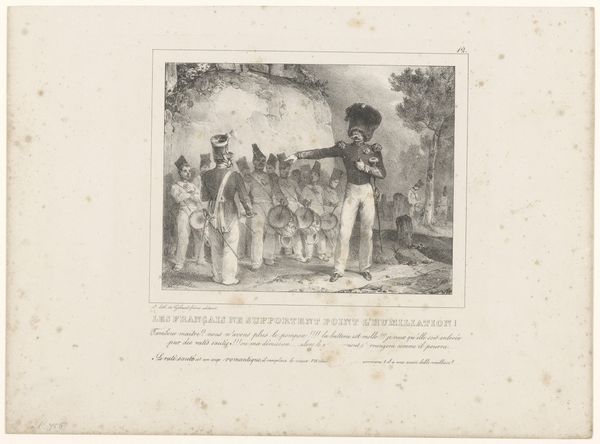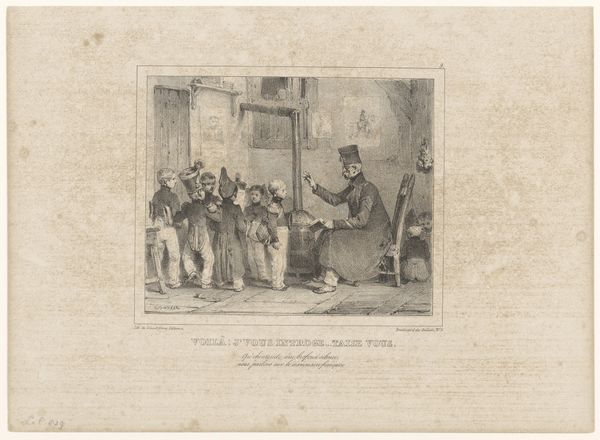
painting, watercolor
#
painting
#
landscape
#
figuration
#
watercolor
#
romanticism
#
genre-painting
#
history-painting
Dimensions: height 232 mm, width 304 mm
Copyright: Rijks Museum: Open Domain
Victor Adam made this print of four line infantrymen using lithography, a process that democratized image-making in the 19th century. Lithography allowed for the relatively quick and inexpensive reproduction of images. A design is drawn on a stone or metal plate with a greasy crayon, then treated with chemicals so that ink adheres only to the drawn areas. The printmaker then transfers the inked image to paper. The process of lithography, unlike older printmaking methods, did not require highly specialized skills, and this opened up opportunities for more artists to create and distribute their work. This print's crisp lines and subtle shading show the sophistication that lithography could achieve. The medium also reflects wider issues of labor, politics, and consumption, and the industrial revolution which made lithography a viable way to reproduce images. The print speaks volumes about art's relationship to industrialization and its evolving role in society. By considering the materials, making, and context, we can appreciate the full depth and relevance of Adam's print.
Comments
No comments
Be the first to comment and join the conversation on the ultimate creative platform.

